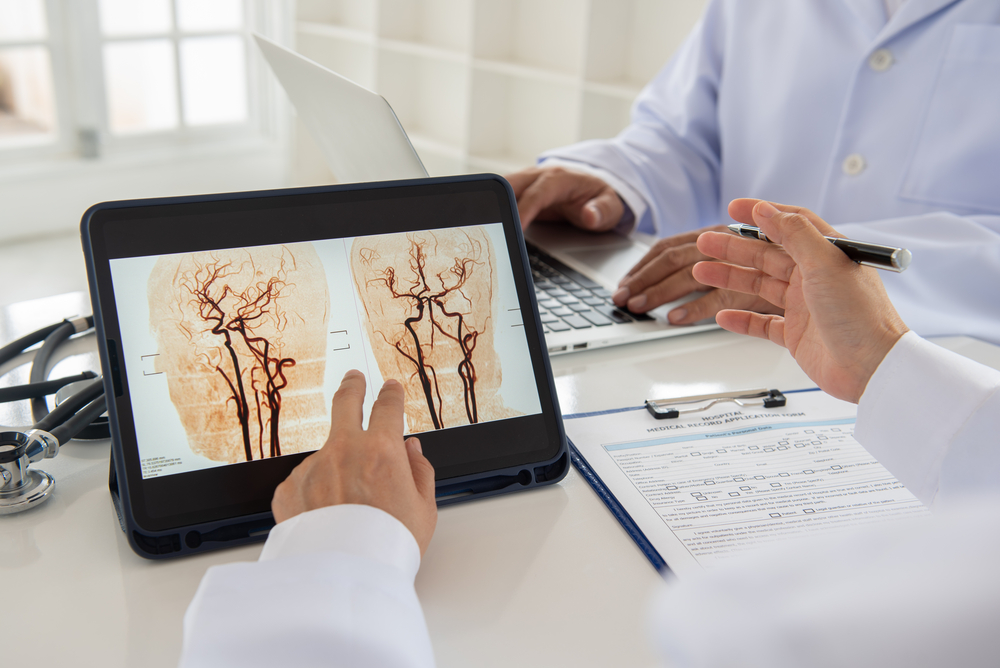Aneurysm: Symptoms, Causes, Diagnosis & Treatment
Written By: Dr. Anas Abdul Majeed
Updated On:January 24, 2024

Aneurysm: Symptoms, Causes, Diagnosis & Treatment
What is Aneurysm?
An aneurysm is a balloon-like expansion often associated with the weakness of an artery. Large blood vessels called arteries transport oxygenated blood from the heart to various body regions. A bulge or aneurysm may develop as a result of the force of the blood flowing through a weak spot in the arterial wall. Aneurysms typically don't hurt. It's possible that you won't be aware of it until it ruptures or bursts. If it does, it might be fatal or extremely serious.
Any artery in your body has the potential to develop an aneurysm. Your legs, belly, brain, or heart can all develop aneurysms. The type of aneurysm is determined by the location. The majority of aneurysms occur in the aorta; they are called aortic aneurysm. Other types of aneurysms include abdominal aortic aneurysm, cerebral aneurysms, thoracic aortic aneurysm, carotid aneurysm, popliteal aneurysm, mesenteric artery aneurysm, and splenic artery aneurysm.
Causes of Aneurysm
Aneurysms can sometimes develop at birth. Also, they can appear at any time during your life. Although an aneurysm's cause is frequently unknown, potential causes might include the following:
- Atherosclerosis (narrowing of the arteries)
- Family history
- High blood pressure
- Injury to the aorta
Symptoms of Aneurysm
People frequently are unaware that they have an aneurysm. When an aneurysm ruptures, it's a medical emergency that needs to be treated right away. Aneurysm rupture symptoms appear suddenly. You could feel any of the following:
- Lightheaded
- Fast heart rate
- Abrupt, excruciating pain in your back, chest, abdomen, or head
- Abrupt loss of consciousness after a painful headache
The symptoms an aneurysm produces depend on where it is located. Shock symptoms include a dip in blood pressure, feeling clammy, as well as a racing heart. Additional signs of an aneurysm may include the following:
- Dizziness or confusion
- Having trouble swallowing
- Fatigue
- Headache
- Vomiting or nausea
- Back, chest, or abdominal pain
- Swelling in your neck or a pulsing abdominal lump
- Quick heartbeat
- Vision morphs
When to see a doctor for Aneurysm?
If you experience any of the following, contact your healthcare professional right away:
- Lightheadedness
- Quick heartbeat
- Abrupt, excruciating pain in your back, chest, abdomen, or head
Aneurysm Risk Factors
Many groups are affected differently by various aneurysm types. Females are more affected by brain aneurysms than those males. Males are more frequently affected by aortic aneurysms.
Individuals with a higher risk of abdominal aortic aneurysms are usually
- males,
- older than 60 years,
- and smokers.
Aneurysm Complications
When an aneurysm ruptures, internal bleeding results. Depending on where the aneurysm is located, a rupture may be extremely risky or even fatal.
A blood clot that forms in your neck and spreads to your brain can be caused by an aneurysm. An aneurysm in the brain that bursts results in a subarachnoid hemorrhage. This kind of stroke is sometimes referred to as a brain bleed.
Aneurysm Diagnosis
Testing is necessary if you get a sudden, severe headache or other symptoms that could indicate an aneurysm rupture. Diagnostics might reveal whether there has been bleeding into the region between your brain and the tissues around it.
The following screening exams and techniques are used to identify and find brain aneurysms:
- A CT scan: When a stroke or other type of bleeding in the brain is suspected, this CT scan imaging is typically the first test performed. The test yields 2D pictures of the brain.
- A spinal tap, often known as a lumbar puncture: Red blood cells will most likely be present in the fluid surrounding your brain and spine if you've experienced a subarachnoid hemorrhage. A test of this cerebrospinal fluid can assist in making a diagnosis if you have signs of a ruptured aneurysm but a CT scan does not reveal any signs of bleeding.
- An MRI. This imaging procedure produces precise 2D or 3D images of the brain using a magnetic field and radio waves. If there is brain hemorrhage, the scans can demonstrate it.
- Cerebral Angiogram: A catheter, which is a small, flexible tube, is utilized during this surgery. A major artery, typically in the wrist or groin, is where the catheter is placed. Your heart is bypassed when the catheter travels to your brain's arteries. A unique dye is placed into the catheter, and it travels to the arteries in your entire brain.
Aneurysm Treatment
If your doctor determines that you have an unruptured aneurysm, they will continuously monitor your health. Treatment options include medication or surgery, depending on the kind, location, and size of the aneurysm. Medication to increase blood flow, decrease blood pressure, or manage cholesterol may be prescribed by your doctor. These procedures can lessen pressure on the arterial wall and assist in slowing aneurysm formation. Massive aneurysms that could burst might need to be operated on. If an aneurysm rupture, surgery will also be required.
Aneurysm Prevention
Aneurysms without rupture are typical. Sometimes you can't stop them. Yet if you lead a healthy lifestyle, you can lower your risk of getting an aneurysm. Some lifestyle changes to consider include the following:
- Consume heart-healthy foods
- Regularly moving around
- Keep a healthy weight
- Quit smoking
References
Ba'Albaki, H. A., & Clements Jr, S. D. (1989). Left ventricular aneurysm: a review. Clinical cardiology, 12(1), 5-13.
Calero, A., & Illig, K. A. (2016, March). Overview of aortic aneurysm management in the endovascular era. In Seminars in vascular surgery (Vol. 29, No. 1-2, pp. 3-17). WB Saunders.
Pisano, C., Balistreri, C. R., Ricasoli, A., & Ruvolo, G. (2017). Cardiovascular disease in ageing: an overview on thoracic aortic aneurysm as an emerging inflammatory disease. Mediators of inflammation, 2017.
van der Vliet, J. A., & Boll, A. P. (1997). Abdominal aortic aneurysm. The Lancet, 349(9055), 863-866.
Meet our doctors from the Neurology department
















